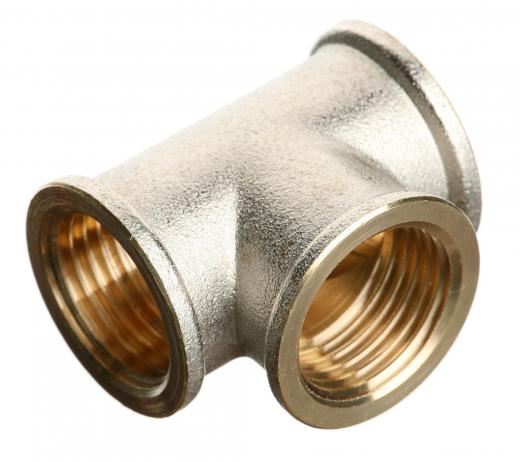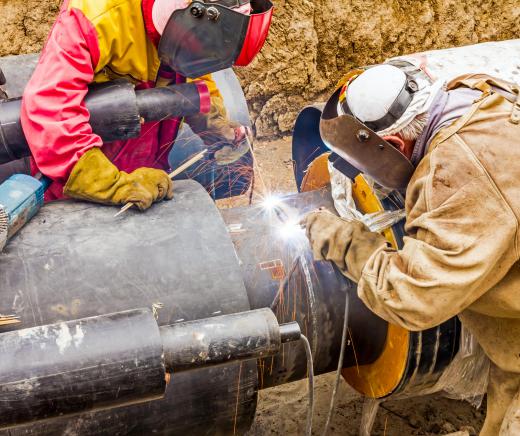Pipe cutting is simply the process of cutting pipe without deforming it. A pipe that has had its shape deformed is useless, or nearly so, as it will not fit properly with other pipes or fittings. Many hand tools for cutting pipe, as well as larger machines for performing this task, are used by plumbers, construction workers, and home improvement enthusiasts. Pipe cutting is also another term for a process called pipe profiling, which is the removal of a specific portion of a pipe to allow it to be joined with another pipe or fitting, usually by welding.
As a technique used by plumbers and other trade workers in pipe fitting, pipe cutting usually involves a type of tool that cuts radially around the pipe. A tool is clamped on the pipe at the location of the desired cut and is moved around the pipe at that point while a screw control gradually increases pressure on a blade. After several revolutions, the pipe is cut, without changing its shape by crushing. Larger pipes may be cut by saws or larger, powered machines or saws.

Larger metal pipes used in industry and construction may be connected by a technique that is also known as pipe cutting but that is more properly termed pipe profiling. Pipe profiling is usually performed with a plasma cutter or arc welder and involves cutting the pipe to remove a certain section or to shape the pipe in some way, allowing it to be fitted with another pipe. This task can be performed by a person, but is more often performed, under controlled conditions, by a machine, often a robot with computer controls to ensure precision.

This type of pipe cutting is common in ship building, off-shore drilling and refinery operations, and construction of many types involving large or heavy pipes to be joined under exacting tolerances. Vessels and systems that are used while pressurized or under outside pressure are often assembled and manufactured using this technique. Welding joints formed by pipe profiling provide a tighter and stronger seal than mechanical joints.
Pipe profiling is normally done only on large metal pipes, and the process is almost always preparation for fitting to another pipe by welding. As a technique, however, it is possible to apply this type of pipe cutting to other types of pipes as well. Pipes are made from many different materials, each requiring specific tools for their modification, but the idea behind pipe profiling may be used with concrete, plastic, or other pipe materials.
